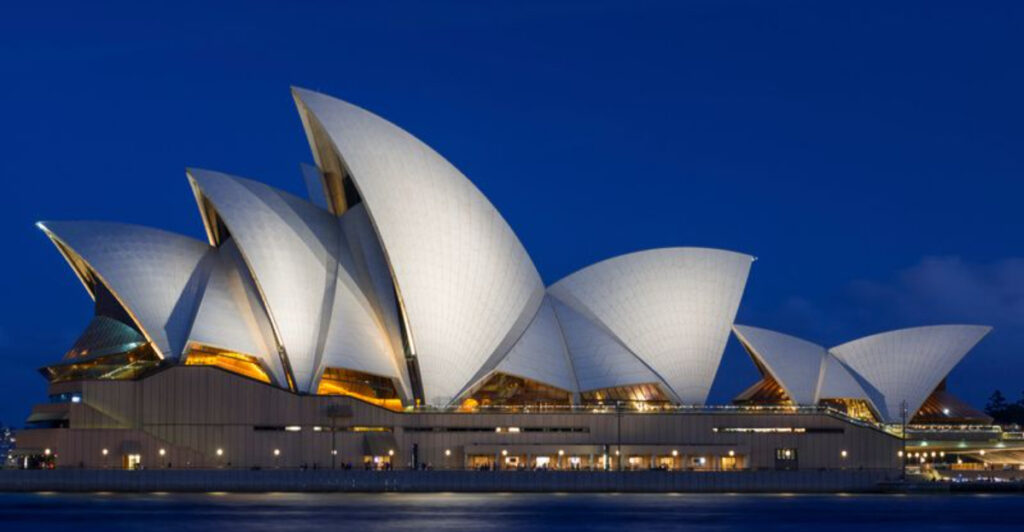Exploring the world’s architectural marvels offers a glimpse into the creativity and vision that have shaped human history. From ancient wonders to modern masterpieces, these buildings are not merely structures but symbols of culture, innovation, and beauty. Each one tells a unique story, capturing the imagination and inspiring countless generations. Join me on a journey to 31 breathtaking buildings that have changed everything, redefining the boundaries of architecture and design.
The Shard
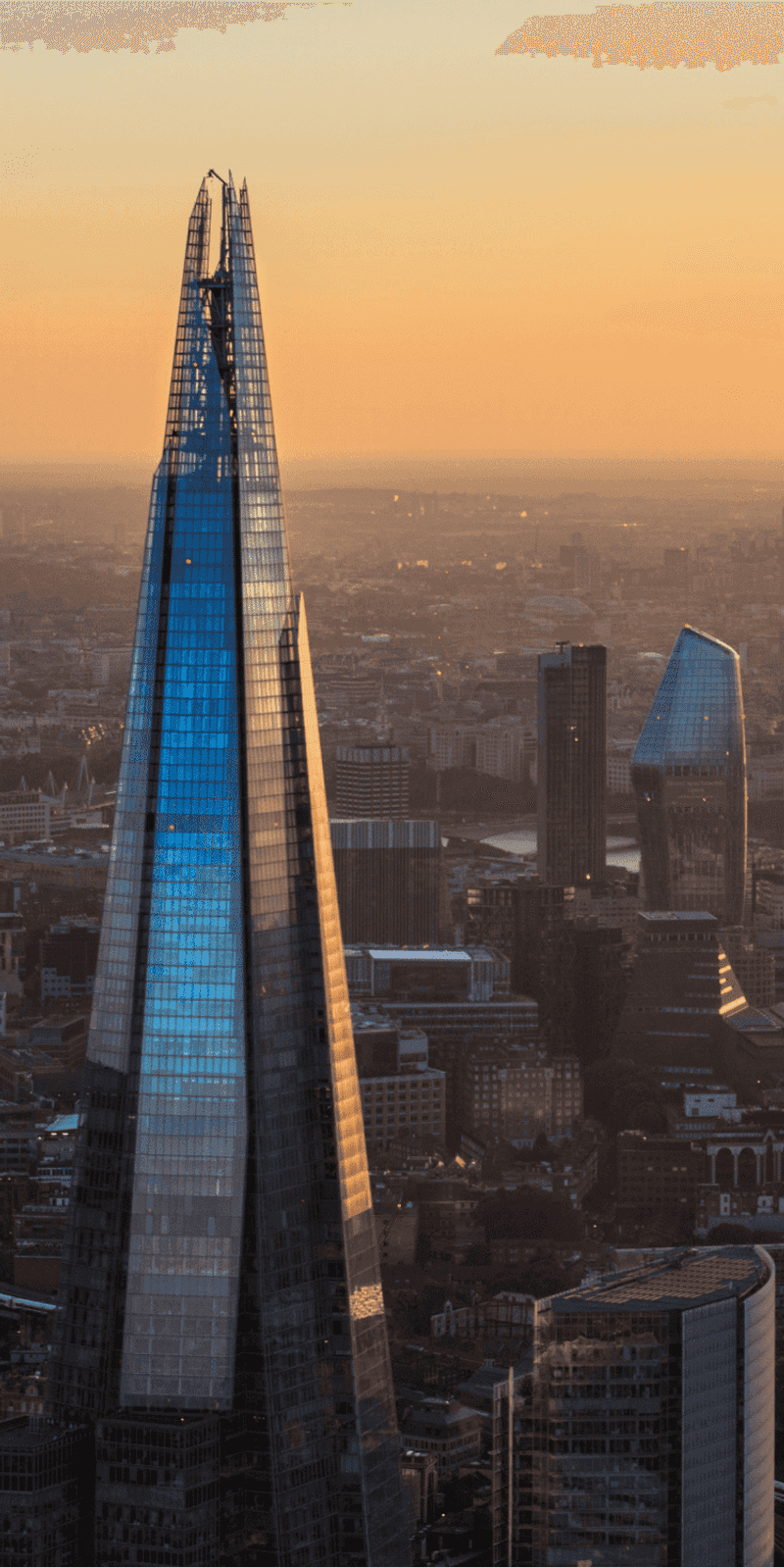
Rising gracefully from the banks of the Thames, The Shard is more than just London’s tallest building. Its shimmering glass facade mirrors the vibrant life of the city. Standing 310 meters tall, it offers stunning views that stretch miles into the horizon. Designed by Renzo Piano, this architectural marvel reshaped London’s skyline, offering a blend of offices, residences, and restaurants. Each level tells a story of luxury and elegance, drawing visitors from around the globe. Did you know? The Shard is the tallest building in the European Union, redefining what skyscrapers can achieve.
Sydney Opera House

With its white sail-like shells, the Sydney Opera House stands as a testament to creative engineering. Its design, by Jørn Utzon, was initially controversial but has since won hearts worldwide. Nestled in Sydney Harbor, it’s not just a performance venue; it’s a cultural icon. Visitors often marvel at how its architecture complements the surrounding water. Inside, the acoustics are as captivating as the exterior. A symbol of Australia, the Opera House represents bold innovation and artistic excellence. Fun fact: Its construction was estimated to take four years but took fourteen.
Burj Khalifa
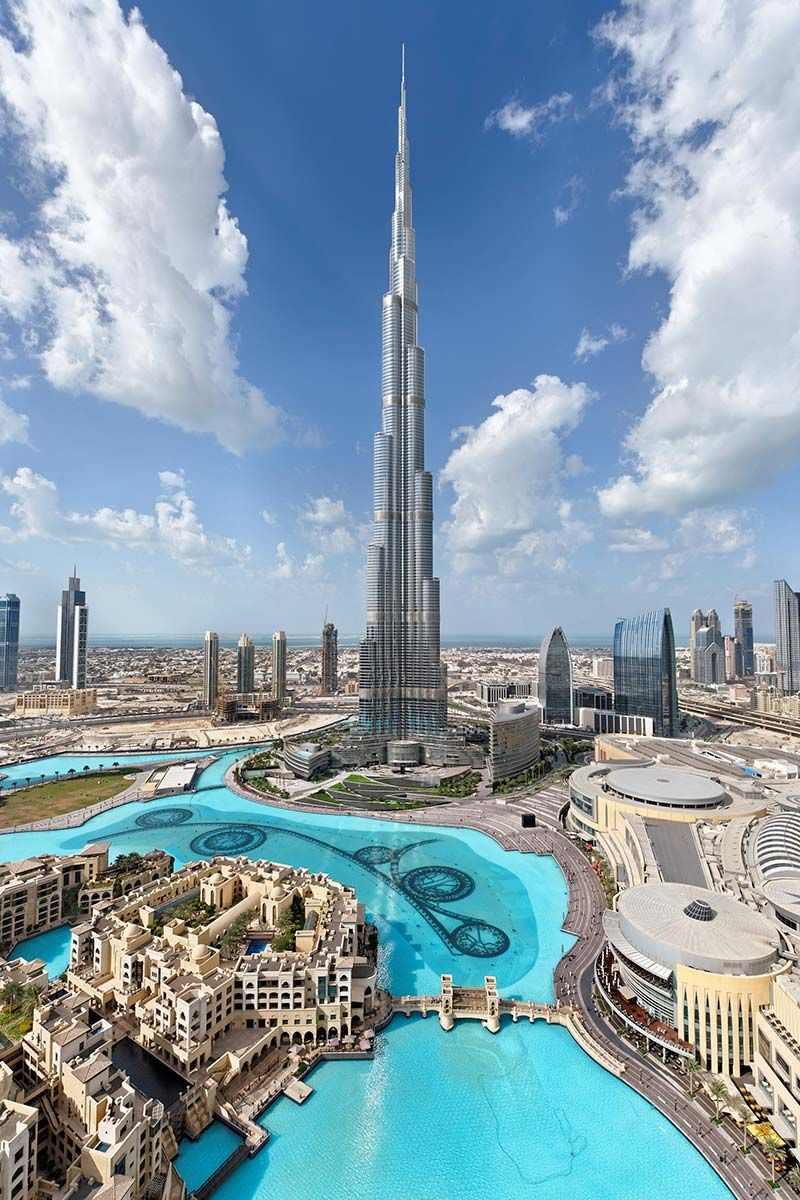
Soaring high in the Dubai skyline, the Burj Khalifa is the world’s tallest building. Its sleek, tapering form symbolizes the limitless possibilities of human ambition. At 828 meters, it offers panoramic views of the city and desert beyond. Designed by Adrian Smith, it combines cutting-edge technology with luxurious design. Visitors flock to its observation decks, experiencing the thrill of standing atop the world. The building’s design draws inspiration from Islamic architecture, creating a unique blend of tradition and modernity. Its record-breaking height is a testament to Dubai’s vision.
Taj Mahal
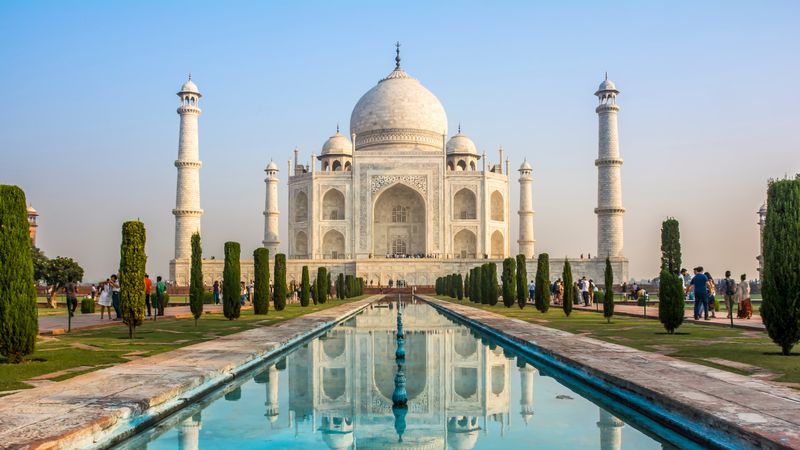
A symbol of love and elegance, the Taj Mahal is India’s crown jewel. Constructed by Emperor Shah Jahan in memory of his beloved wife Mumtaz Mahal, its white marble captures the changing light of day. The symmetrical gardens and intricate carvings create a serene ambiance. Visitors are often struck by its perfect proportions and delicate beauty. It’s more than a mausoleum; it’s a work of art that transcends time. The Taj Mahal’s allure draws millions, offering a glimpse into the romance and artistry of the Mughal era. Truly, it’s a wonder of the world.
Eiffel Tower
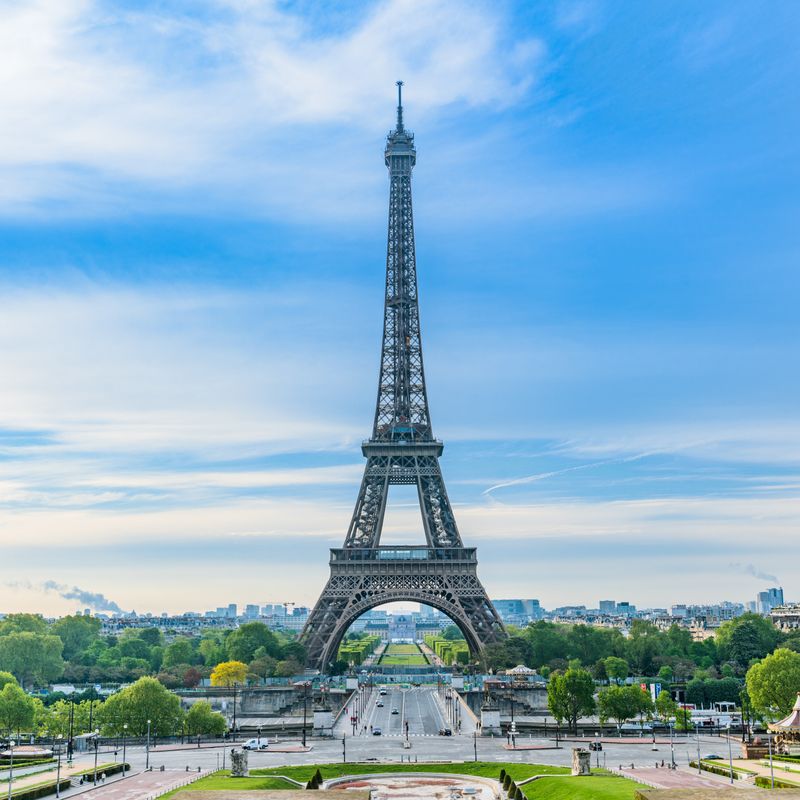
Standing tall in the heart of Paris, the Eiffel Tower is an enduring symbol of romance and innovation. Designer Gustave Eiffel envisioned it for the 1889 World’s Fair, and its iron lattice structure became an instant icon. Whether viewed during the day or illuminated at night, it captivates with its elegance. The tower offers panoramic views of Paris, from the Seine River to the distant hills. Its design is both simple and sophisticated, embodying the spirit of French engineering. Over 7 million people visit annually, making it one of the world’s most famous landmarks.
Sagrada Familia
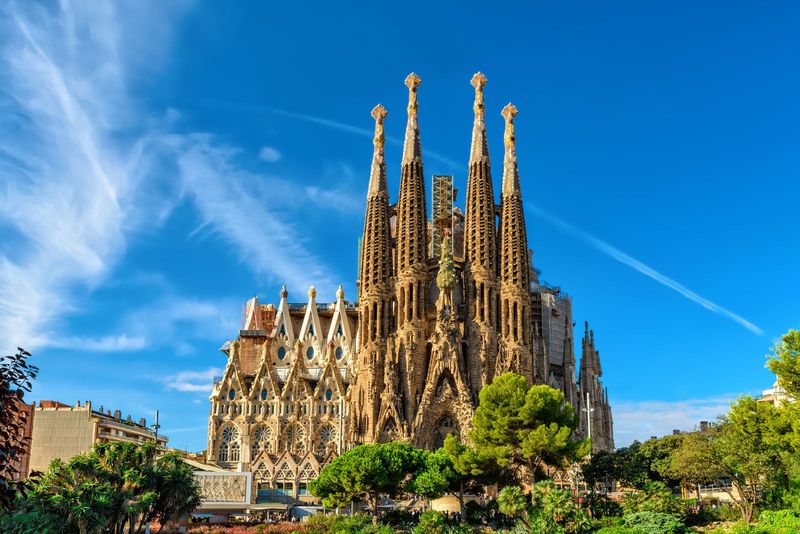
Barcelona’s Sagrada Familia is unlike any other church. Designed by Antoni Gaudí, its construction began in 1882 and continues today. The intricate facades and towering spires reflect Gaudí’s unique vision, blending Gothic and Art Nouveau styles. The interior is a kaleidoscope of colors, with stained glass windows casting vibrant patterns. Visitors are drawn to its spiritual and artistic splendor. Each element tells a story, intertwining nature and faith. Despite being unfinished, it stands as a testament to human creativity and perseverance. Gaudí’s masterpiece is a symbol of Barcelona’s rich cultural heritage.
Petronas Towers
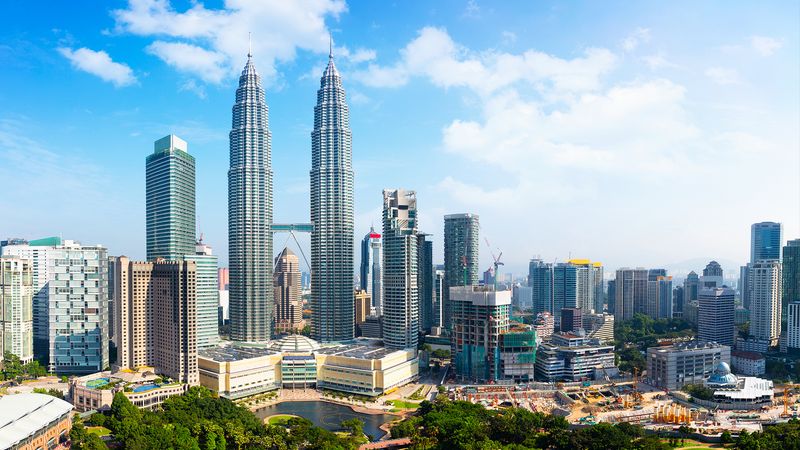
The Petronas Towers, twin giants in Kuala Lumpur, symbolize Malaysia’s forward-looking spirit. Standing at 452 meters, they’re the tallest twin towers in the world. Their design, inspired by Islamic art, features interlocking squares and circles, creating a harmonious geometric pattern. The skybridge connecting the towers offers stunning views of the cityscape. Inside, the towers house offices, a shopping mall, and an art gallery. Visitors appreciate the blend of modernity and tradition, embodied in the sleek steel and glass exterior. The Petronas Towers are a beacon of innovation and cultural pride.
Guggenheim Museum Bilbao
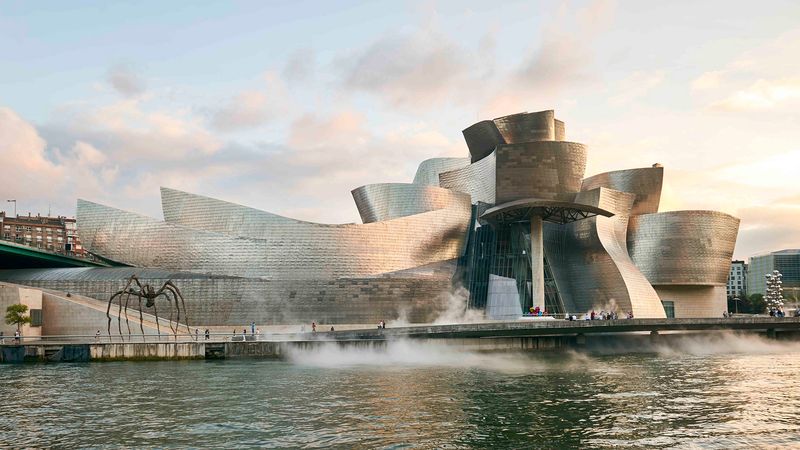
A masterpiece of contemporary architecture, the Guggenheim Museum in Bilbao is a feast for the eyes. Designed by Frank Gehry, its flowing curves and reflective titanium surface create a dynamic, ever-changing appearance. The museum is home to world-class art collections and exhibitions, drawing art lovers from around the globe. Its design revolutionized the perception of museums, transforming Bilbao into a cultural hub. The interplay of light and form makes the building itself a work of art. Gehry’s daring vision has made the Guggenheim a landmark of architectural innovation.
Cologne Cathedral
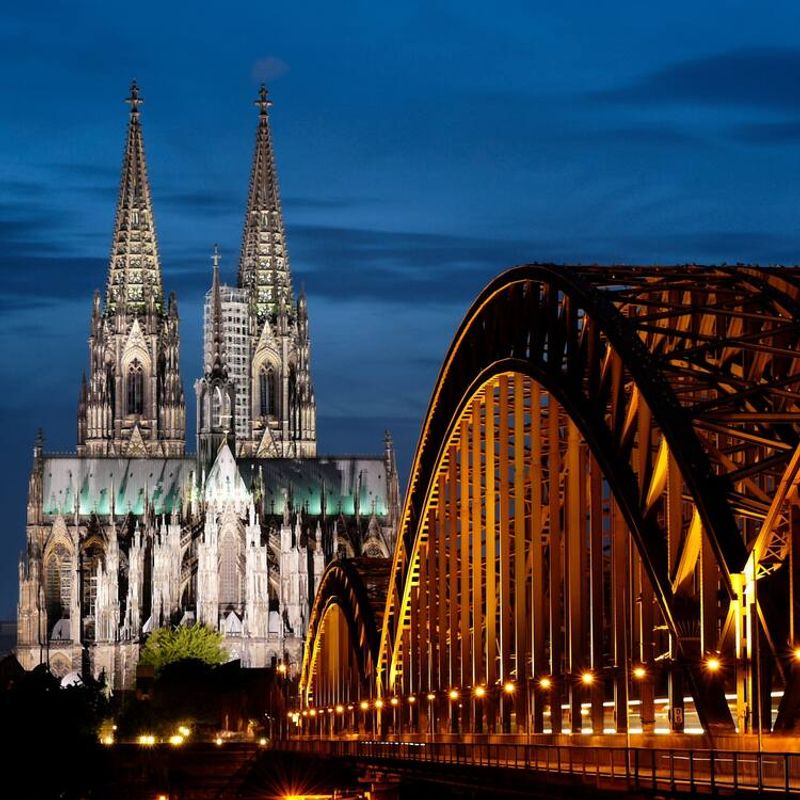
The Cologne Cathedral is a masterpiece of Gothic architecture. Its twin spires, soaring into the sky, dominate the city’s skyline. Begun in 1248, it took over 600 years to complete. The cathedral’s interior is equally breathtaking, with soaring arches and vibrant stained glass windows. Each detail tells a story of faith and artistry. Visitors often marvel at the intricate stone carvings and the stunning views from the towers. A UNESCO World Heritage site, the cathedral stands as a testament to human devotion and craftsmanship. Its grandeur continues to inspire awe and reverence.
Fallingwater
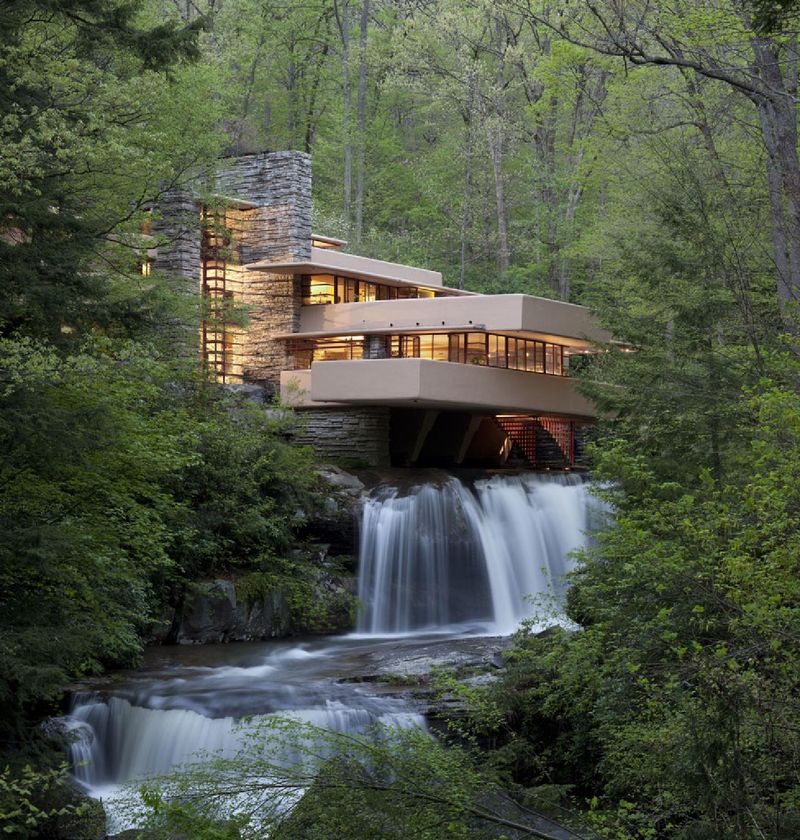
Fallingwater, designed by Frank Lloyd Wright, is a harmonious blend of architecture and nature. Perched over a waterfall in Pennsylvania, it appears to float above the cascading water. Wright’s innovative design integrates the home with its natural surroundings, using local materials and open spaces. Visitors are captivated by the seamless connection between indoors and outdoors. The house’s cantilevered terraces extend over the water, creating a dynamic interaction with the landscape. Fallingwater is a testament to Wright’s vision of organic architecture, where design and nature coexist in perfect harmony.
St. Basil’s Cathedral
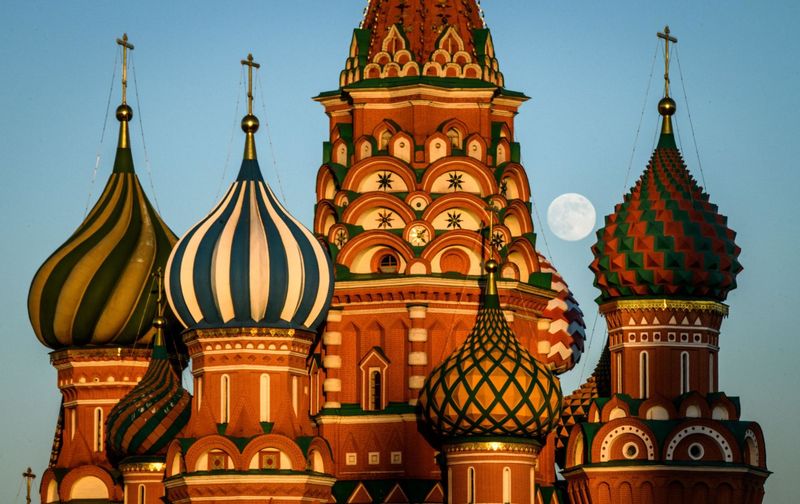
Moscow’s St. Basil’s Cathedral is a fairytale wonder. Its colorful onion domes and intricate patterns captivate with their vibrant hues and whimsical design. Built in the 16th century by Ivan the Terrible, it commemorates military victories. Each dome is unique, reflecting the diverse architectural styles of Russia. Inside, the labyrinth of chapels and corridors offers a glimpse into the rich history and spirituality of the Russian Orthodox Church. St. Basil’s is more than a cathedral; it’s a symbol of Russian culture and resilience, enchanting visitors with its beauty and rich heritage.
Louvre Pyramid
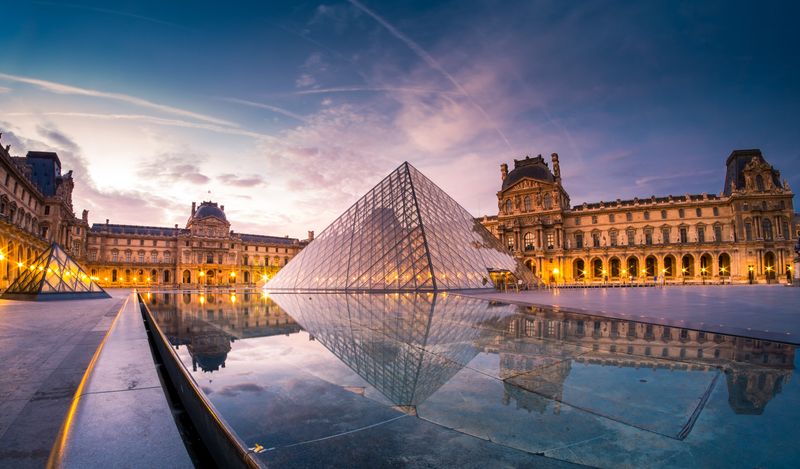
The Louvre Pyramid, a modern addition to the historic Louvre Museum, is a study in contrast. Designed by I. M. Pei, the glass and metal structure serves as the main entrance, harmonizing with the classical architecture of the palace. Its geometric form is both simple and striking, reflecting the museum’s blend of tradition and innovation. Visitors are drawn to its transparency and elegance, which illuminate the museum’s vast collections. The pyramid symbolizes the fusion of old and new, inviting exploration and discovery. It stands as a beacon of art and culture in the heart of Paris.
Empire State Building
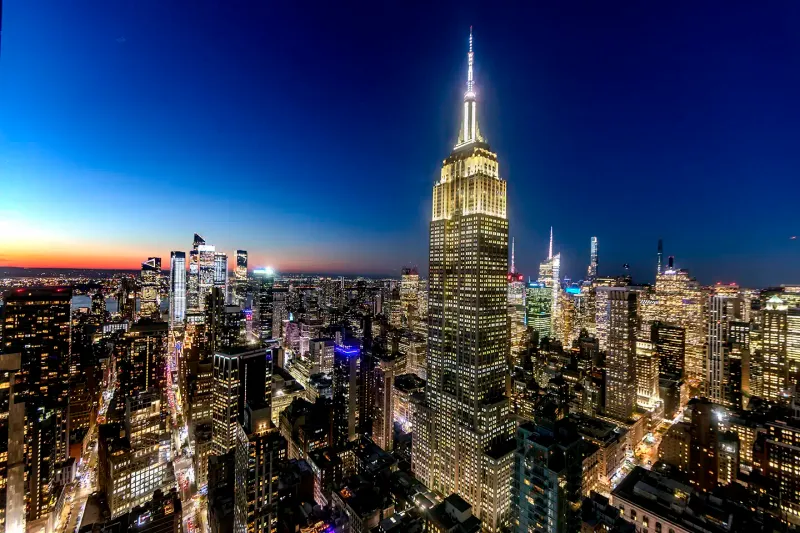
The Empire State Building stands as a symbol of New York City’s ambition and resilience. Completed during the Great Depression, its Art Deco design exudes timeless elegance. Rising 1,454 feet with its antenna, it offers breathtaking views of the cityscape. Visitors marvel at its iconic silhouette, which has graced countless films and photographs. The building’s spire lights up in various colors, celebrating significant events. Inside, the observatories offer a panoramic perspective of the city’s vibrant life. A testament to human ingenuity, the Empire State Building remains a beloved landmark and cultural icon.
Parthenon
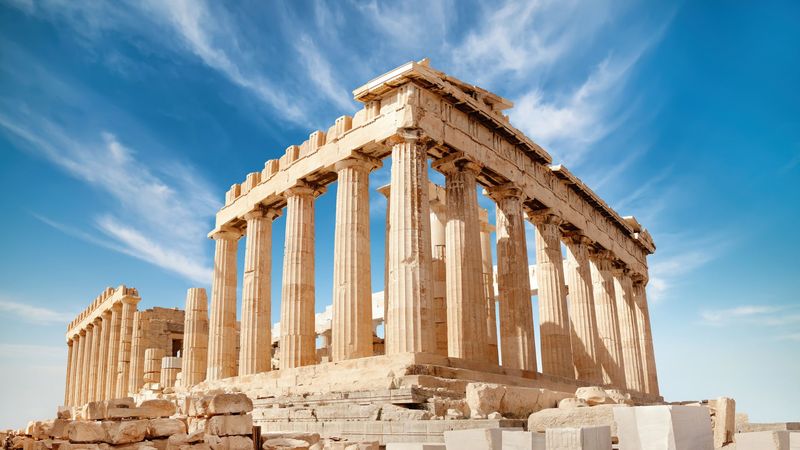
Perched atop the Acropolis in Athens, the Parthenon is an enduring symbol of ancient Greek civilization. Built in the 5th century BC, its Doric columns and sculptural details embody the principles of classical architecture. The temple was dedicated to Athena, the city’s patron goddess, reflecting the cultural and religious life of ancient Athens. Visitors are captivated by its majestic presence and historical significance. Despite centuries of wear, it stands as a testament to the artistry and wisdom of the Greeks. The Parthenon’s timeless beauty and enduring influence continue to inspire awe.
Lotus Temple
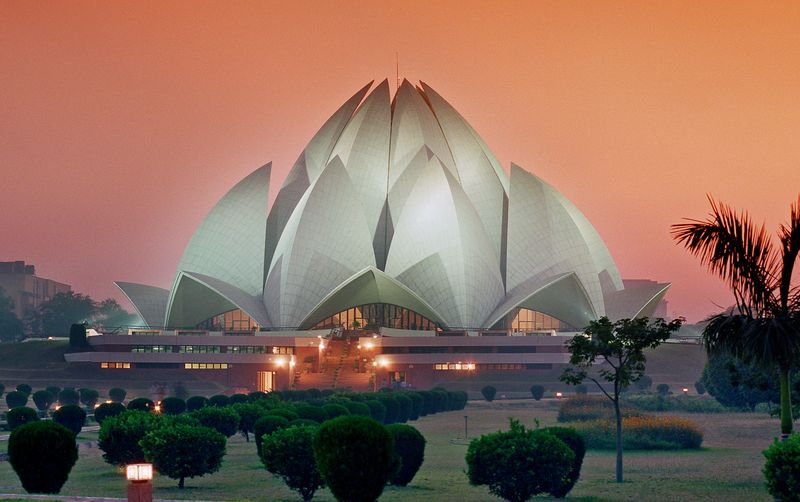
In New Delhi, the Lotus Temple blossoms as a beacon of unity and peace. Its stunning lotus shape, crafted from white marble, symbolizes purity and tranquility. This Bahá’í House of Worship welcomes people of all faiths to meditate and reflect within its serene halls. Visitors are enchanted by its harmonious design, which integrates the beauty of nature with spiritual contemplation. The temple’s nine petals and surrounding pools create a tranquil oasis amidst the bustling city. As a symbol of universal harmony, the Lotus Temple inspires reflection and connection across cultures and beliefs.
Hagia Sophia
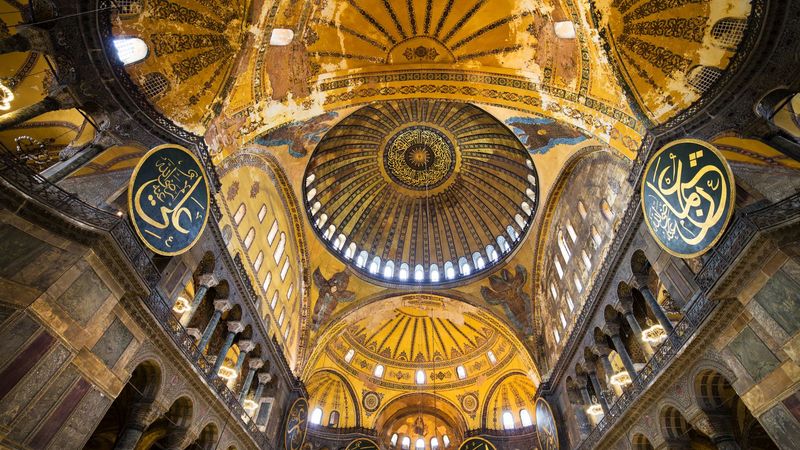
The Hagia Sophia in Istanbul is a masterpiece of Byzantine architecture. Its massive dome and intricate mosaics capture the grandeur and spirituality of its time. Originally a cathedral, it became a mosque, and now serves as a museum. Visitors are awed by its vast interior and rich history. The interplay of light and space creates a sense of divine presence, drawing pilgrims and tourists alike. Each mosaic tells a story of faith and artistry, reflecting the cultural crossroads of East and West. As a symbol of Istanbul’s diverse heritage, the Hagia Sophia inspires wonder and reverence.
Sears Tower (Willis Tower)
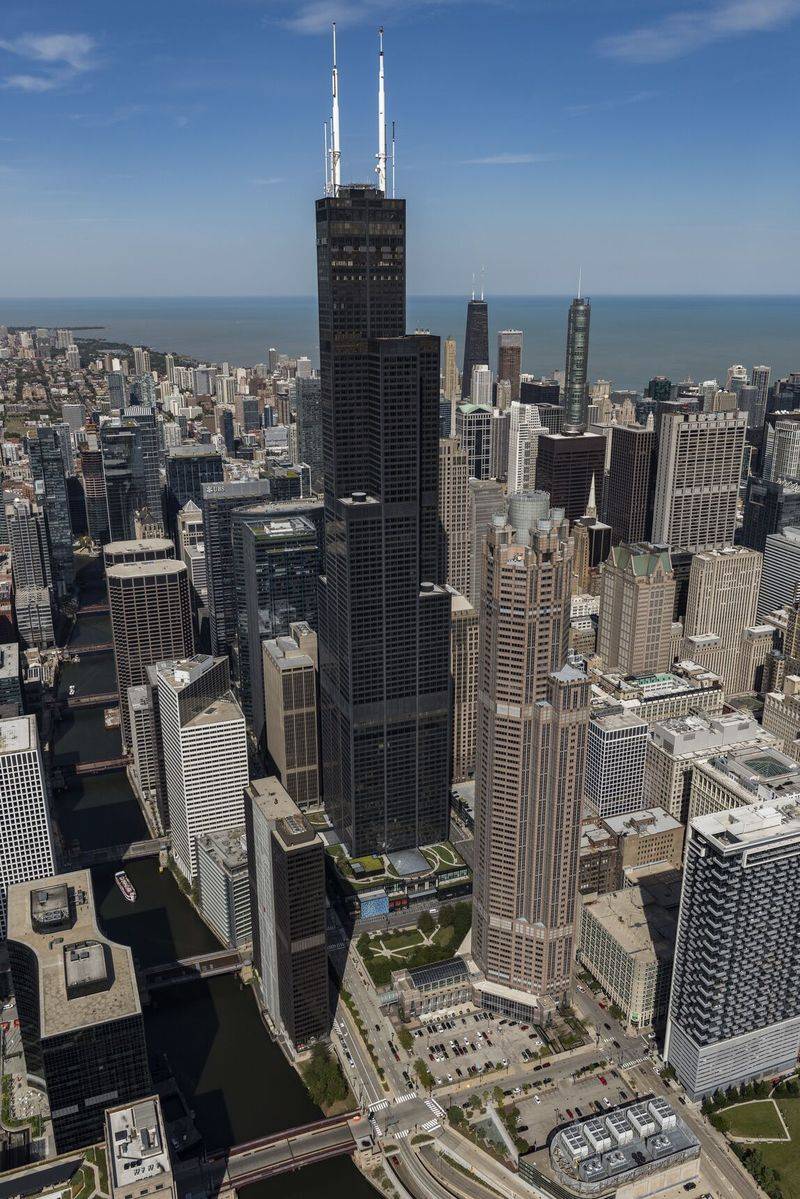
Once the world’s tallest building, Chicago’s Willis Tower, formerly known as the Sears Tower, is an icon of modern engineering. Its sleek, black exterior rises 1,450 feet, dominating the city’s skyline. The Skydeck offers thrilling views, where visitors can step onto a glass ledge and gaze down at the bustling streets below. Designed by Bruce Graham and Fazlur Rahman Khan, the tower’s innovative tubular structure set new standards for skyscrapers. Inside, it houses offices, broadcasting stations, and dining options. The Willis Tower remains a symbol of Chicago’s architectural prowess and vibrant energy.
Pantheon
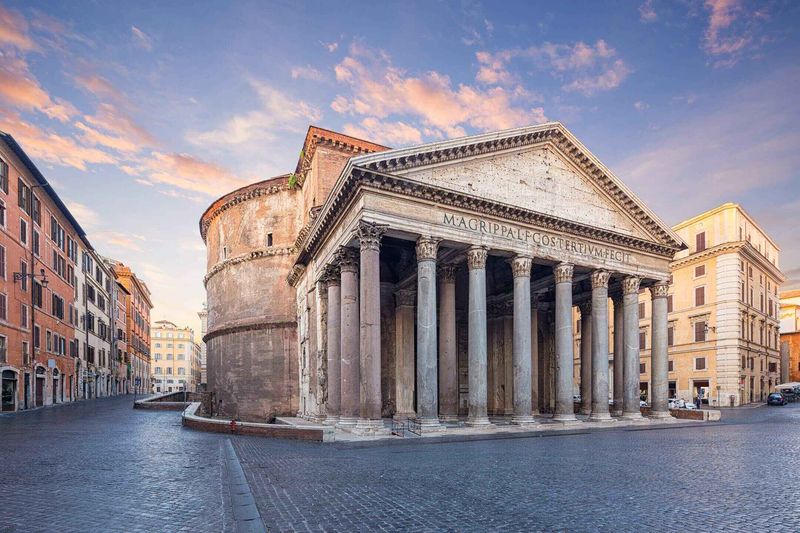
Rome’s Pantheon is a testament to the ingenuity of ancient Roman architecture. Its perfectly domed roof, with a central oculus, creates a mesmerizing play of light and shadow. Originally built as a temple to all gods, it now serves as a church and historical site. Visitors are captivated by its harmonious proportions and architectural precision. The Pantheon’s influence extends beyond its historical significance, inspiring countless architects throughout history. Its enduring beauty and engineering brilliance continue to fascinate and inspire, making it one of Rome’s most cherished landmarks.
Château de Chambord
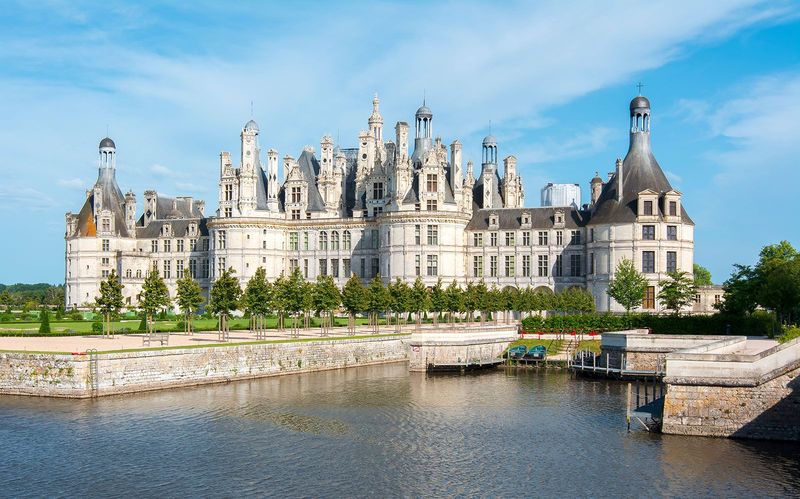
The Château de Chambord is a masterpiece of French Renaissance architecture. Nestled in the Loire Valley, its intricate turrets and expansive grounds exude elegance and grandeur. Built by King Francis I, it reflects the king’s passion for art and innovation. Visitors are enchanted by the double-helix staircase, attributed to Leonardo da Vinci, which spirals gracefully through the center. The château’s blend of medieval and classical elements creates a harmonious fusion of styles. Its timeless beauty and cultural significance continue to captivate, offering a glimpse into the opulence of the French Renaissance.
Great Wall of China
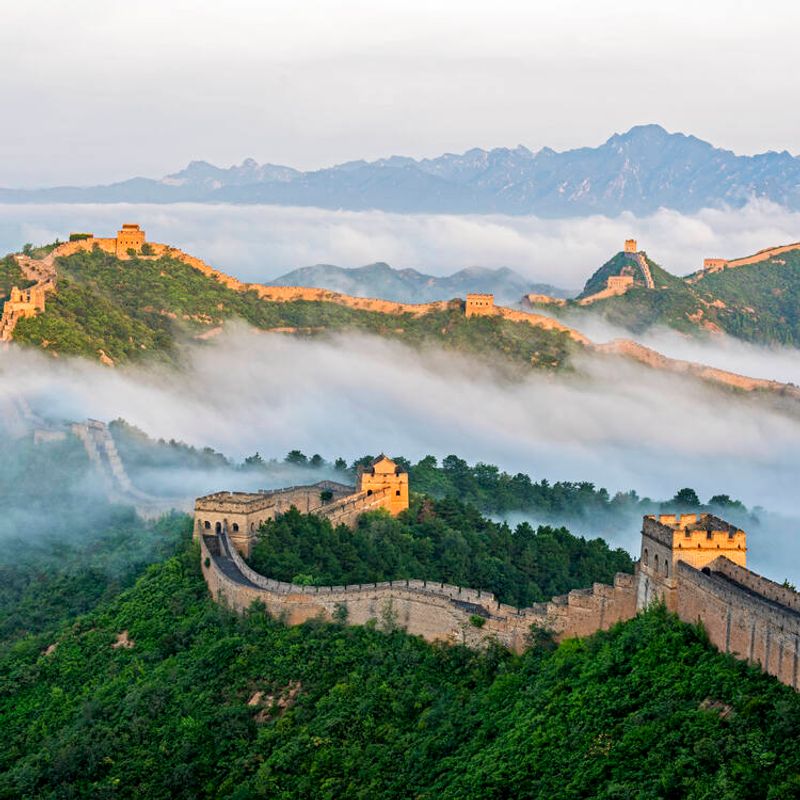
The Great Wall of China is a monumental feat of ancient engineering. Stretching over 13,000 miles, it winds through mountains and valleys, offering breathtaking vistas. Originally built to protect against invasions, it stands as a symbol of China’s rich history and strength. Visitors are awed by its sheer scale and the breathtaking views from its watchtowers. Each section tells a story of perseverance and determination. The wall’s enduring presence connects the past with the present, inviting exploration and reflection. As one of the world’s most iconic landmarks, it continues to inspire awe and admiration.
Neuschwanstein Castle
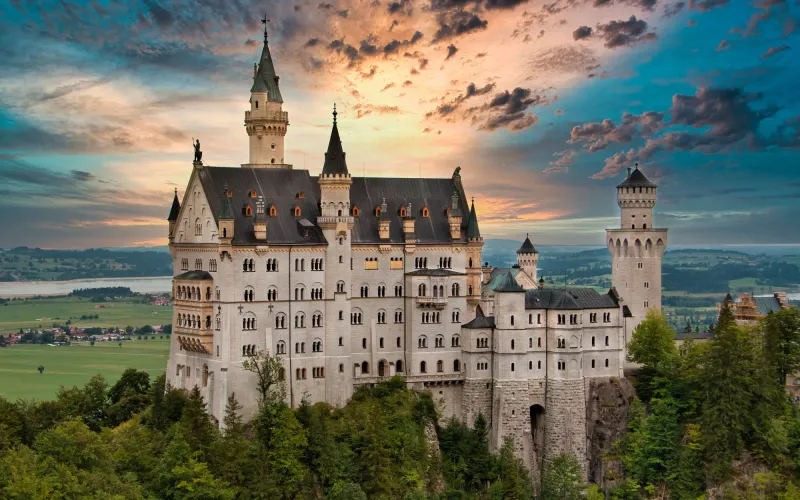
Neuschwanstein Castle in Germany is a dreamlike vision inspired by fairy tales. Perched on a hill, surrounded by snow-capped mountains, it captures the imagination with its romantic architecture. Built by King Ludwig II, it reflects his whimsical vision and love for the arts. Visitors are enchanted by the castle’s ornate interiors and breathtaking views. Each room is a masterpiece of design, telling stories of legends and lore. Neuschwanstein’s fairy-tale charm continues to inspire artists and dreamers worldwide, making it one of Germany’s most beloved landmarks.
Shwedagon Pagoda
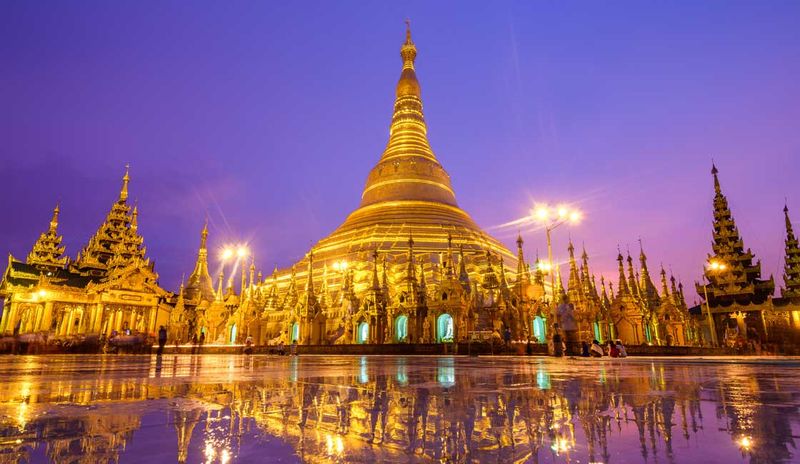
Yangon’s Shwedagon Pagoda is a shimmering golden beacon of spirituality. This majestic stupa, adorned with intricate detailing, stands as a symbol of Myanmar’s rich cultural heritage. The pagoda is a revered pilgrimage site, housing relics of the Buddha. Visitors are captivated by its glowing presence, especially during sunset. Each tier tells a story of devotion and faith. Surrounded by smaller shrines and prayer halls, the pagoda offers a tranquil space for reflection. As a symbol of Myanmar’s spiritual heart, the Shwedagon Pagoda continues to inspire reverence and awe.
Sydney Harbour Bridge

The Sydney Harbour Bridge is an engineering marvel that connects the heart of the city. Its iconic steel arch spans the harbor, providing breathtaking views of the skyline and surrounding waters. Opened in 1932, it stands as a symbol of Australia’s engineering prowess and unity. Visitors can climb the bridge for a thrilling adventure, experiencing the city from a unique perspective. The bridge’s design reflects both strength and grace, harmonizing with the Opera House nearby. As a beloved Sydney landmark, it continues to inspire awe and admiration, drawing visitors from around the globe.
Machu Picchu

Machu Picchu, the ancient Incan citadel in Peru, is a breathtaking testament to the ingenuity of its builders. Nestled in mist-covered mountains, its terraced landscapes offer stunning views and a glimpse into Incan civilization. Visitors are captivated by the site’s mystical ambiance and historical significance. Each stone terrace and building tells a story of ancient engineering and spirituality. The citadel’s design harmonizes with its natural surroundings, reflecting the Incan reverence for nature. As a UNESCO World Heritage site, Machu Picchu continues to inspire awe and exploration, connecting the past with the present.
Petra
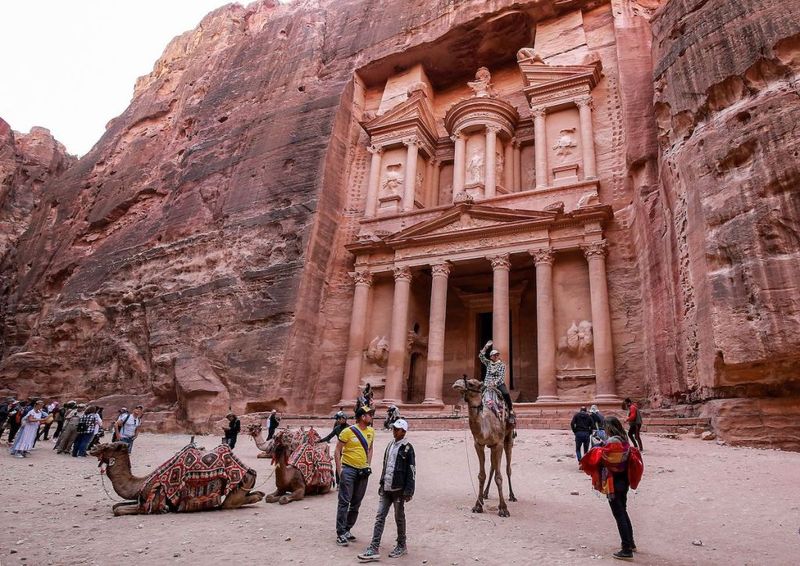
Petra, the ancient rock-cut city in Jordan, is a wonder of the ancient world. Its iconic treasury facade, carved into rose-red cliffs, captivates with its intricate detailing and grandeur. Once a thriving trading hub, Petra’s architecture blends Eastern and Hellenistic influences. Visitors are enchanted by its mysterious passageways and awe-inspiring monuments. Each structure tells tales of commerce and culture, reflecting the city’s rich history. The site’s dramatic desert surroundings add to its allure, inviting exploration and discovery. As a symbol of human creativity and resilience, Petra continues to inspire wonder and admiration.
Alhambra
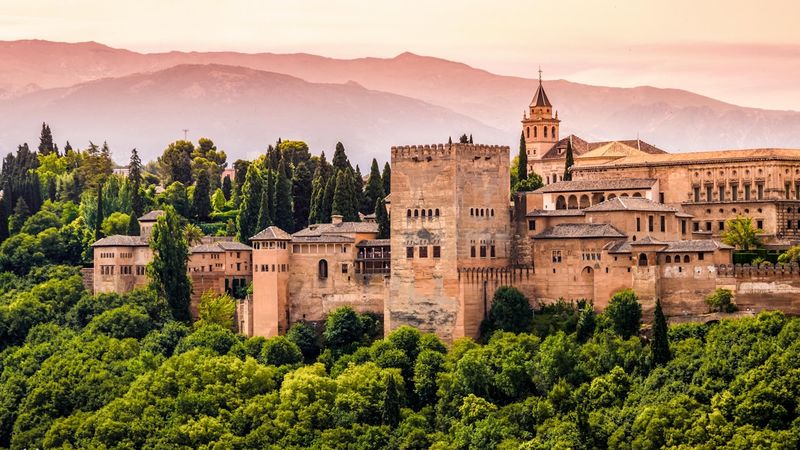
The Alhambra, a Moorish palace complex in Granada, Spain, is a masterpiece of Islamic art and architecture. Its intricate tilework, carved stucco, and lush gardens create a symphony of beauty and elegance. Originally a fortress, it became the residence of Nasrid sultans, reflecting the pinnacle of Andalusian culture. Visitors are captivated by the harmonious blend of art, nature, and history. Each courtyard and hall tells stories of power and grace. The Alhambra’s timeless beauty and cultural significance continue to inspire awe, offering a glimpse into the splendor of Moorish Spain.
Santorini’s Whitewashed Buildings
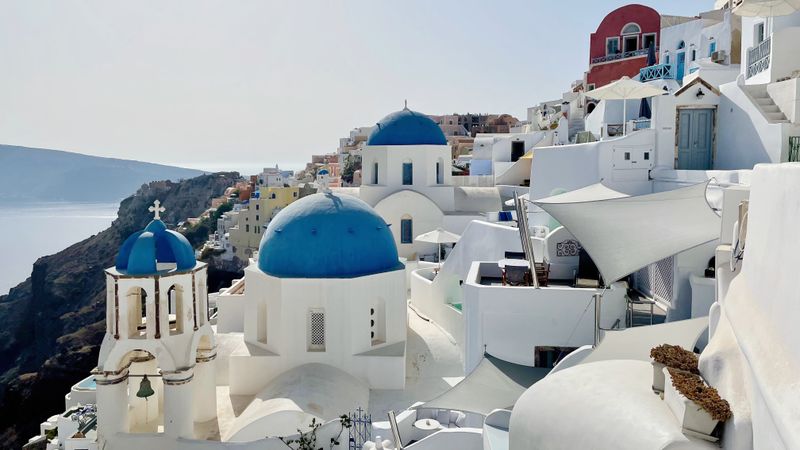
The whitewashed buildings of Santorini, perched on cliffs overlooking the Aegean Sea, create a picture-perfect scene. Their iconic blue domes and narrow streets charm visitors with a blend of simplicity and elegance. The architecture reflects the island’s unique culture and history, harmonizing with the natural beauty of the landscape. Each building tells a story of tradition and resilience, surviving earthquakes and centuries of change. Visitors are enchanted by the stunning sunsets, where the white walls glow with warmth and light. Santorini’s timeless allure continues to inspire travelers, offering a glimpse of paradise.
One World Trade Center
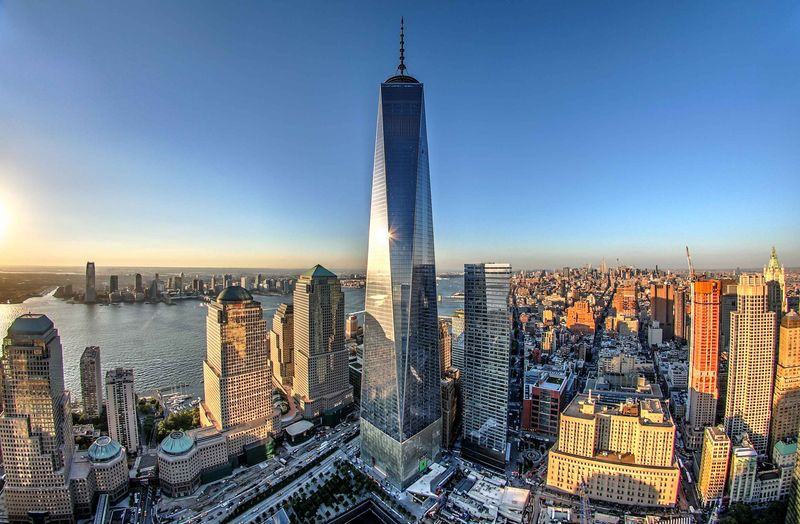
One World Trade Center, towering over New York City, stands as a symbol of resilience and hope. Rising from the ashes of the former Twin Towers, it embodies the spirit of renewal and unity. Its sleek glass facade reflects the city’s vibrant energy, while the observation deck offers breathtaking views. Designed by David Childs, the tower’s design integrates sustainability with modern engineering. Visitors are drawn to its significance and beauty, as it honors those lost while looking toward the future. One World Trade Center is a beacon of strength, inspiring awe and admiration.
Palace of Versailles
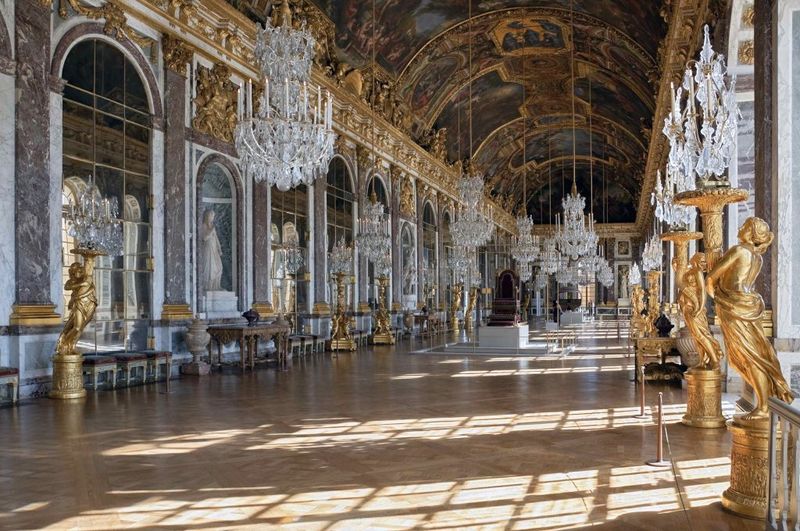
The Palace of Versailles is a symbol of absolute monarchy and opulence. Its lavish interiors, expansive gardens, and ornate architecture reflect the grandeur of the French royal court. Built by Louis XIV, it served as a center of power and culture. Visitors are captivated by the Hall of Mirrors and the meticulously designed grounds. Each room tells stories of historical events and royal intrigue. Versailles’ timeless beauty and cultural significance continue to inspire awe, offering a glimpse into the splendor and extravagance of the French monarchy.
The Dancing House, Prague
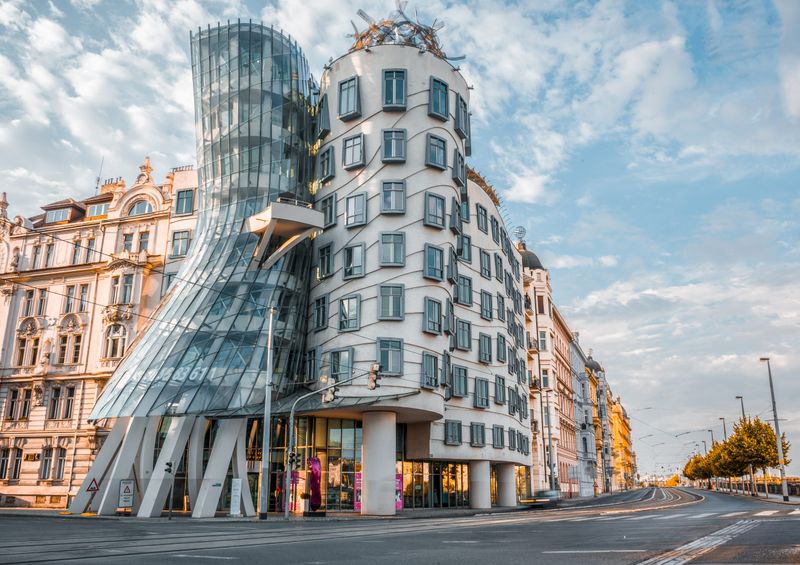
In the heart of Prague, a whimsical structure known as “The Dancing House” dances its way into the skyline. Its curvaceous design, a stark contrast to the traditional architecture surrounding it, invites curiosity and admiration.
Designed by Frank Gehry and Vlado Milunić, this building symbolizes freedom and elegance, embodying the spirit of a city reborn after decades of stagnation. Its glass and concrete meld seamlessly, creating a sense of movement.
Did you know? The building’s nickname, “Fred and Ginger,” pays homage to the famous dance duo, enhancing its allure and charm.
Marina Bay Sands, Singapore
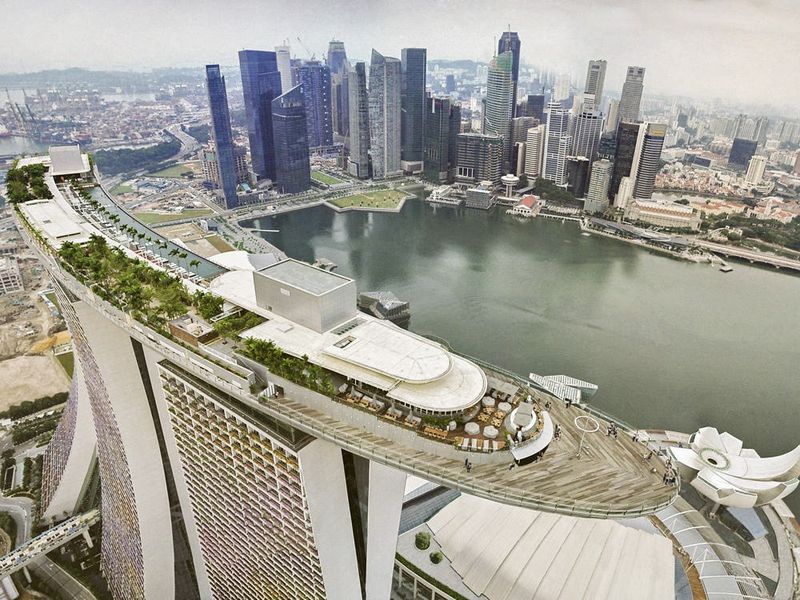
Rising majestically in Singapore, Marina Bay Sands is not just a hotel; it’s an architectural marvel that symbolizes prosperity and innovation. Its three towers, crowned by a breathtaking sky park, redefine luxury.
The infinity pool atop offers an unparalleled view of the city’s vibrant skyline, merging leisure with awe-inspiring beauty. This architectural feat was envisioned by Moshe Safdie, intended to integrate nature and urban life.
Fun fact: The structure’s design, inspired by a deck of cards, represents balance and strength, perfectly aligning with Singapore’s ethos and futuristic aspirations.

